Honestly, I don’t know how I feel about Sedlec Ossuary – or, as it’s better known – Prague’s ‘Bone Church’; but I did know I wanted to visit it.
History of Sedlec Ossuary
The history of the ossuary is fascinating. In 1278, the abbot of the monastery went on a pilgrimage to Jerusalem, bringing back a handful of earth from Golgotha – the site where Christ was crucified (interestingly, Golgotha translates to ‘place of the skull’). The abbot consecrated his cemetery with the soil, and its fame quickly grew when wealthy people requested burial in its holy land.
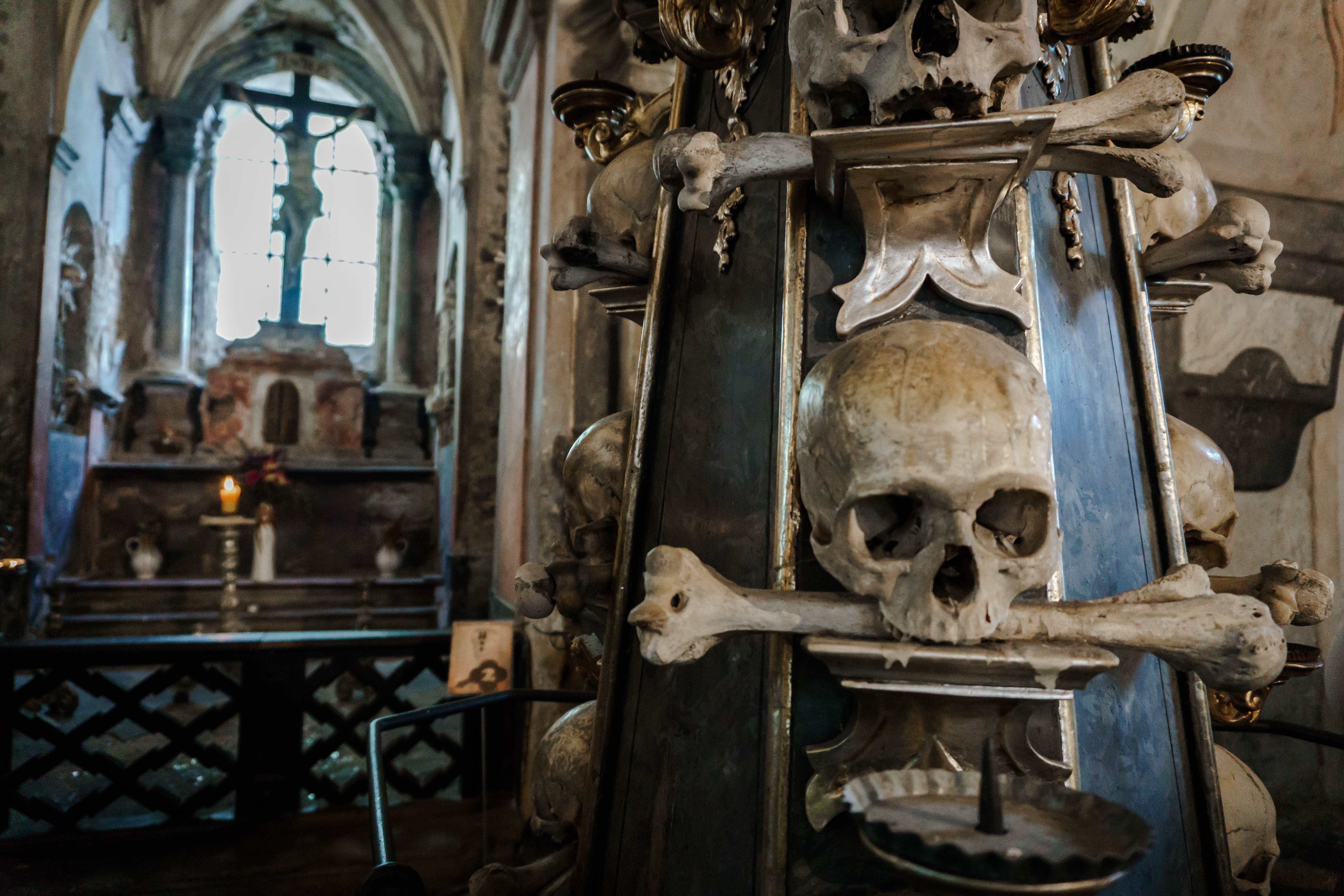
Tragically, plague and war marked the 14th and 15th centuries, resulting in thousands of deaths. Many of these bodies entered their final resting place at Sedlec. By 1511, a huge project began in order to rehouse the bones. A half-blind monk had the task of stacking the bones that were exhumed from the earth. It is estimated that there are around 40,000 skeletons on the site. What a frightful job that must have been!
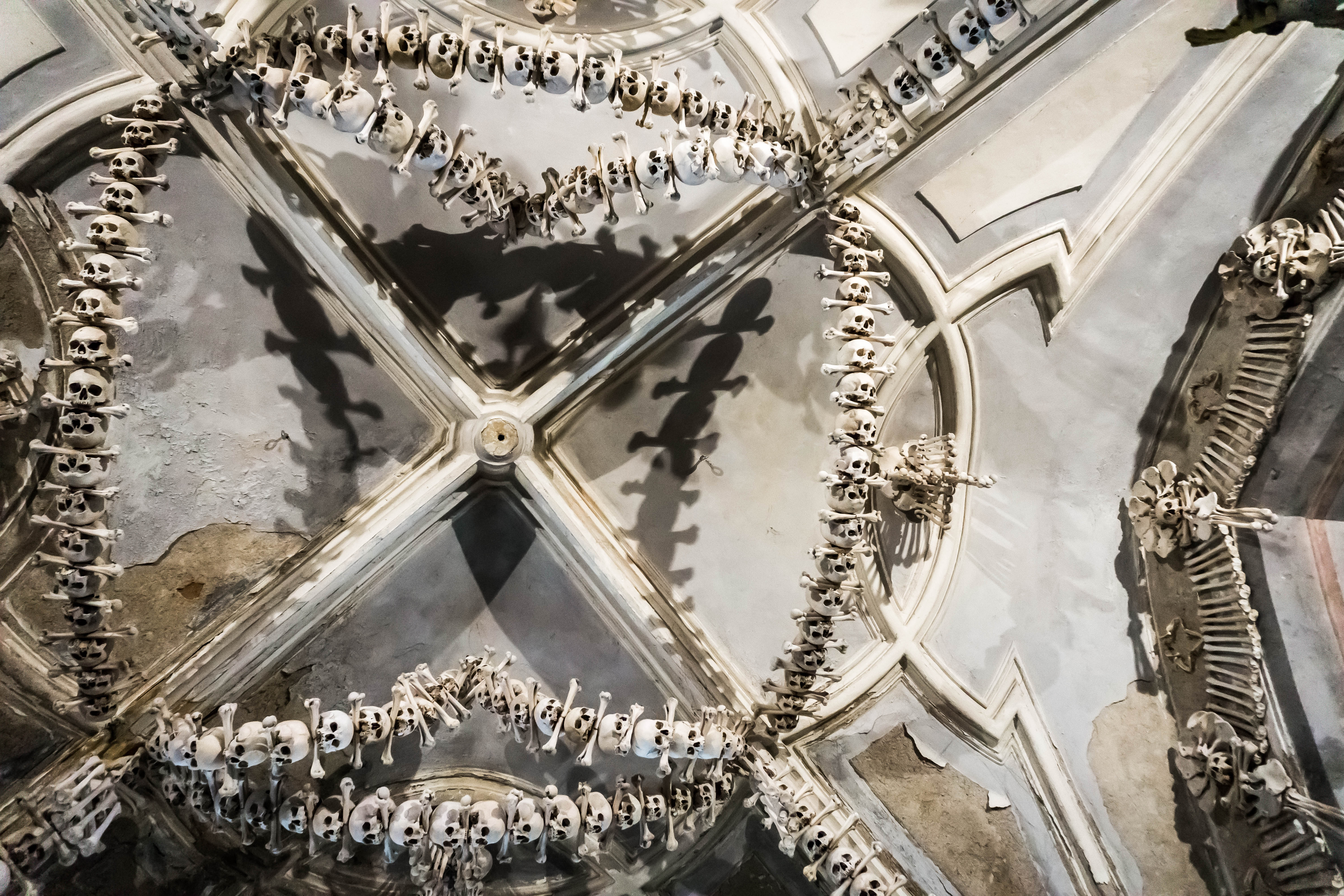
However, it wasn’t until 1870 when the Schwarzenberg family commissioned František Rint to re-arrange the bones that Sedlec Ossuary took on its most macabre guise. It is Rint’s work that is displayed in the ossuary today.
Sedlec’s Exhibits
Amongst the bony décor, visitors to the ossuary can see the Schwarzenberg Coat of Arms, Rint’s signature written in bones, and a chandelier that uses every bone in the human body; although the chandelier is currently removed for maintenance. You can also see ‘bunting’ made from human skulls strung across the ceilings.
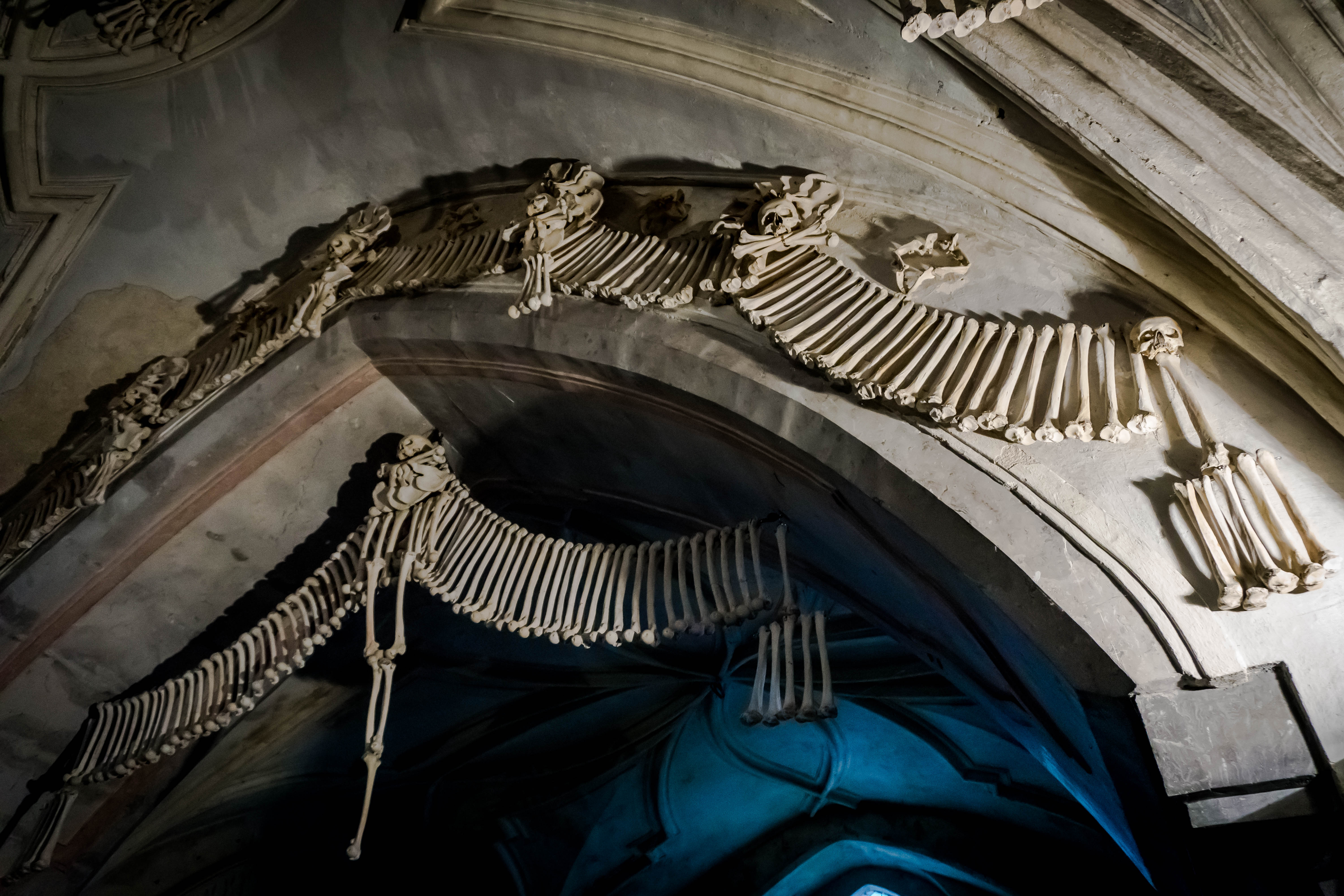
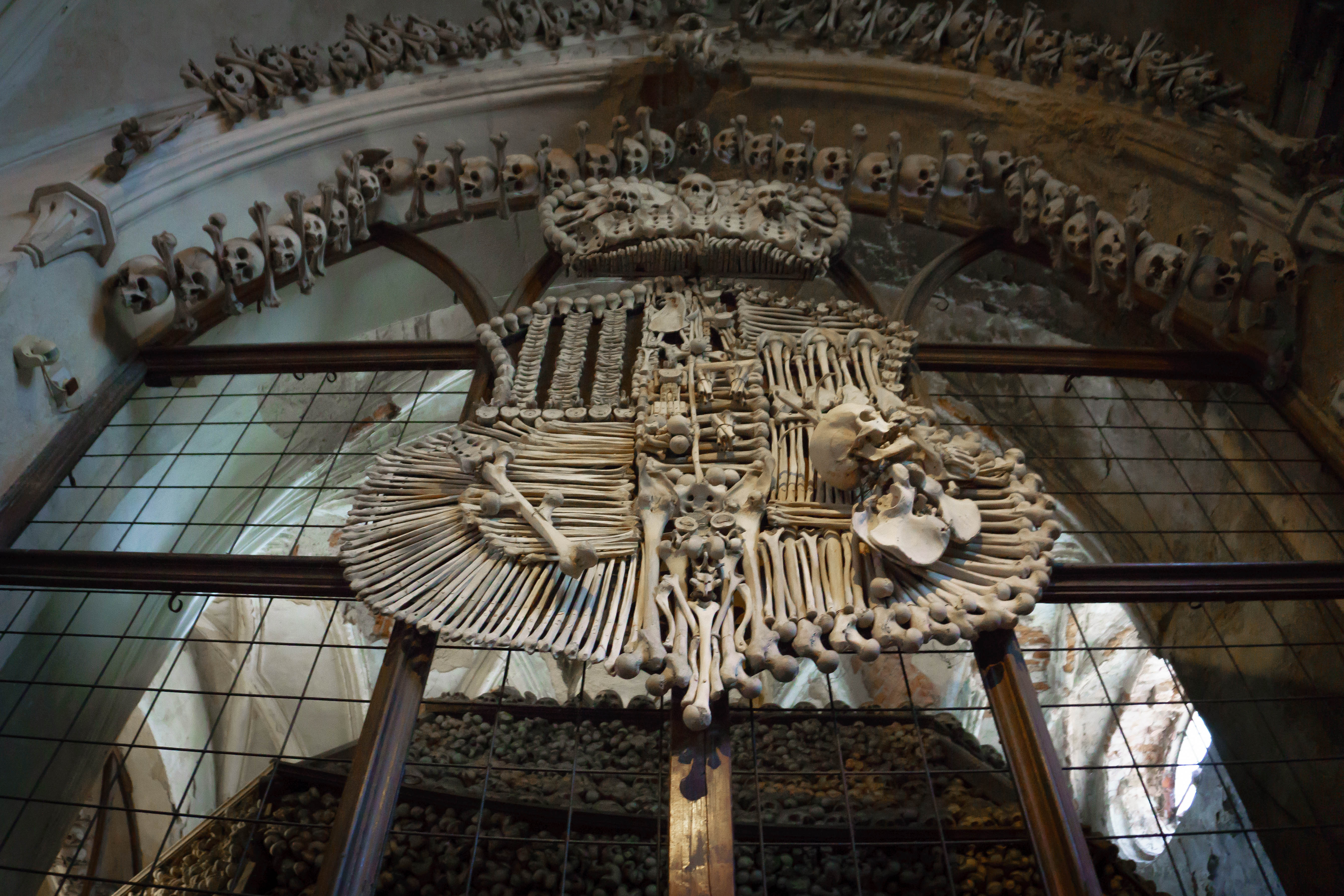
Walking around the ossuary should be more eerie than it actually is, but perhaps that’s because the place is full of camera-toting tourists. In the day it feels harmless, but I don’t think I would like to spend a night alone amongst the grinning skulls. I wonder how people would feel to know that their bones are on display hundreds of years after their death. Many of them requested to spend their eternal rest in hallowed ground, but this seems to be the opposite of their wishes.
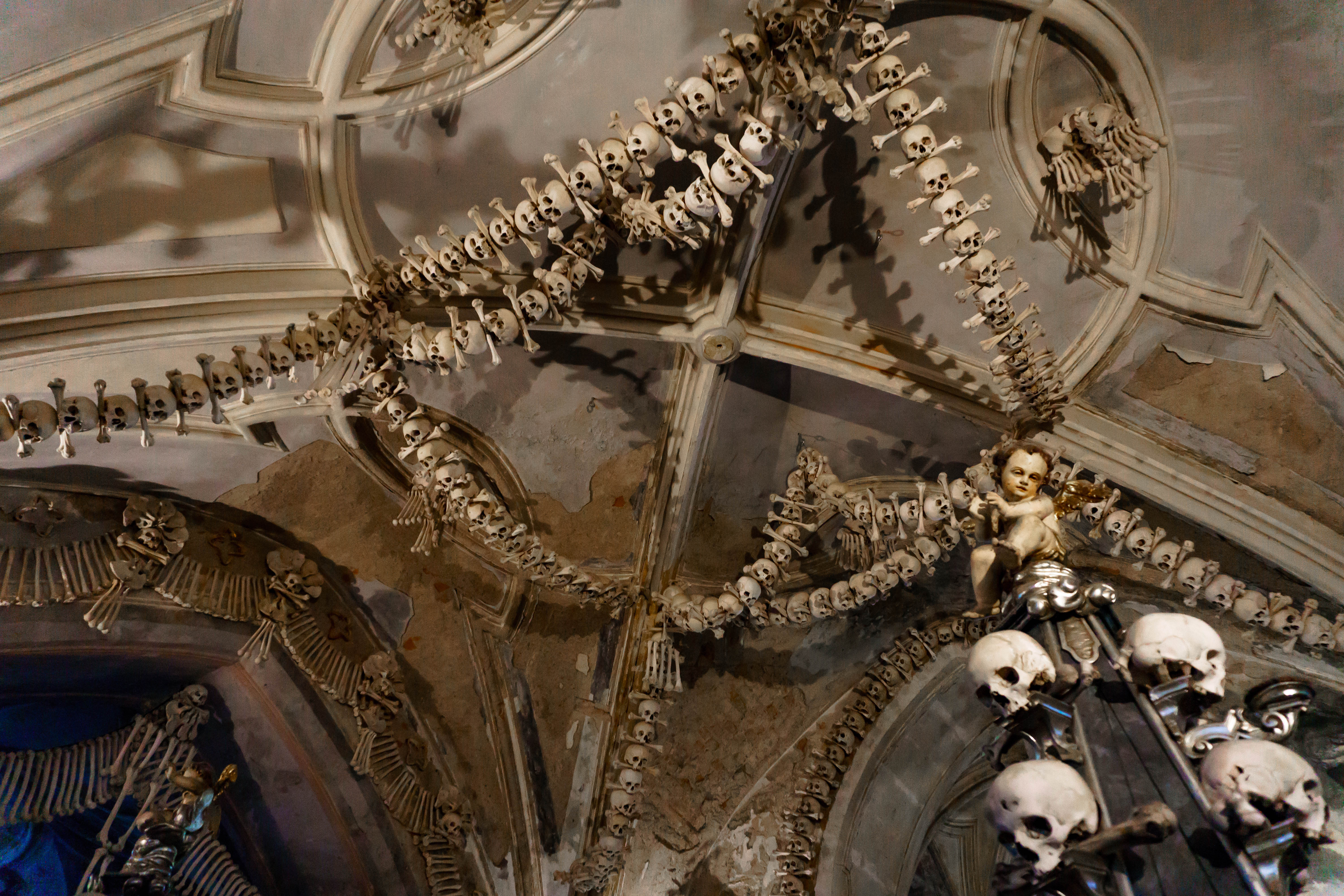
Should the dead be eternally respected? Or, as time goes on and we pass out of remembrance does it even matter? Displaying bones as historical artefacts in a museum is one thing, but exhibiting them purely for art is another. We know nothing about the skeletons at Sedlec.
There are no names, no stories, and no lessons to learn.
With this lack of knowledge comes a startling lack of emotion. There is no sense of tragedy looking at these remains, no sense of injustice, not even a sense of fear, just an insight into what death looks like and a simple reminder that death is part of life.
There is nothing special about the dead – we will all get there in the end. Visiting the ossuary reminded me of this poem (and its variants) sometimes found on gravestones:
Remember me as you go by,
as you are now so once was I.
As I am now so shall you be,
prepare yourself to follow me.
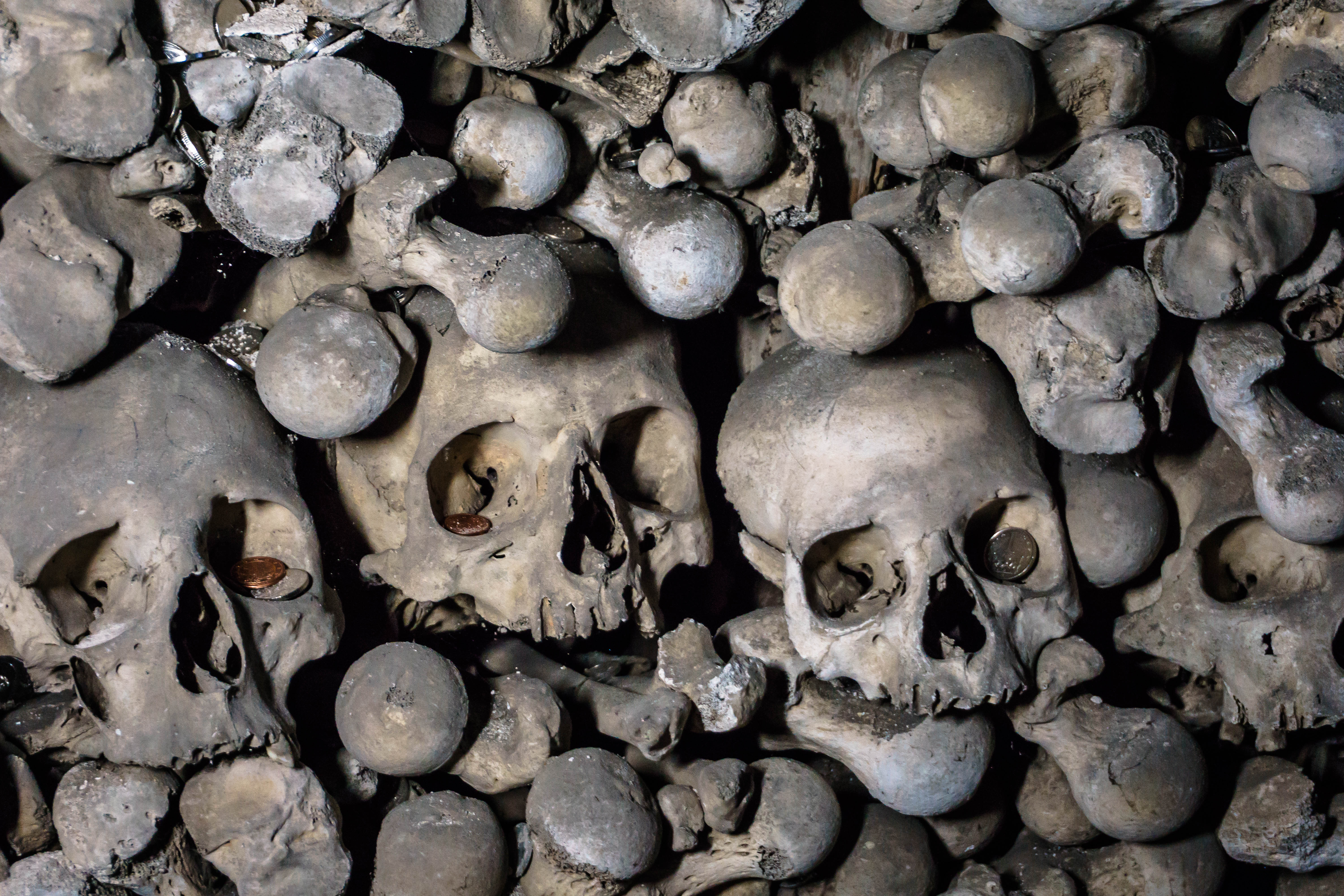
I don’t know about you, but for me there’s no better reminder to live life to the fullest.
Pin this post:
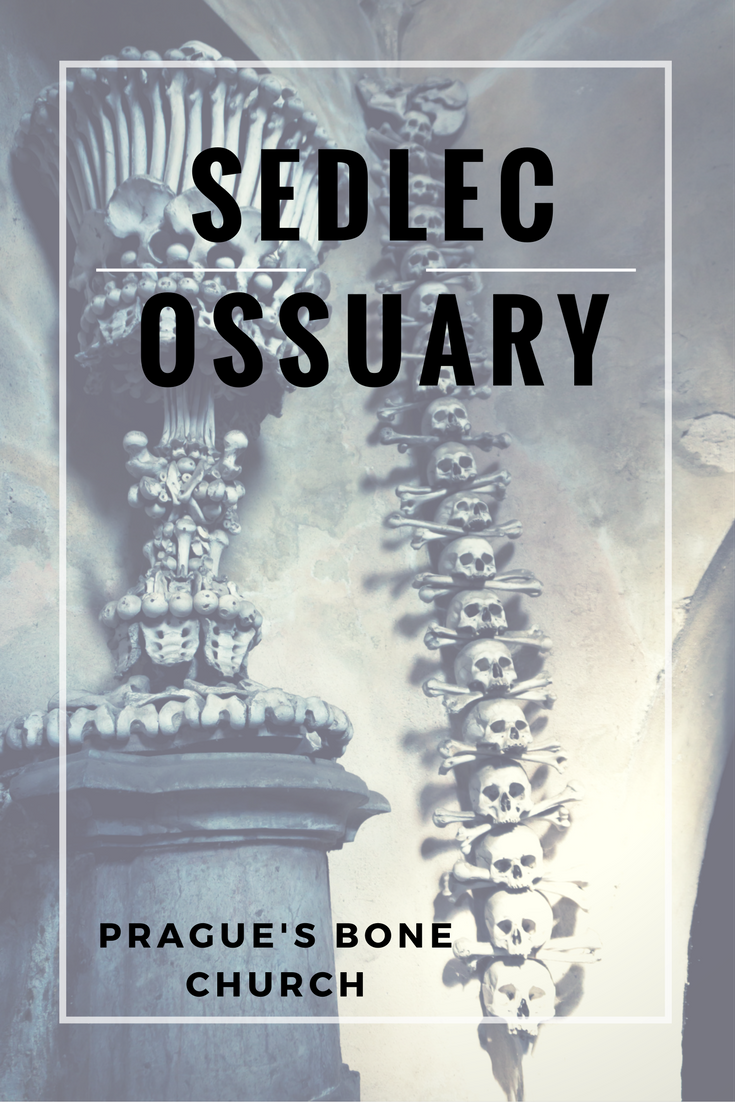
Would you visit an ossuary, or does the thought of it frighten you? I’d love to hear your thoughts about this post. Please leave a comment below.
Thanks for sharing!


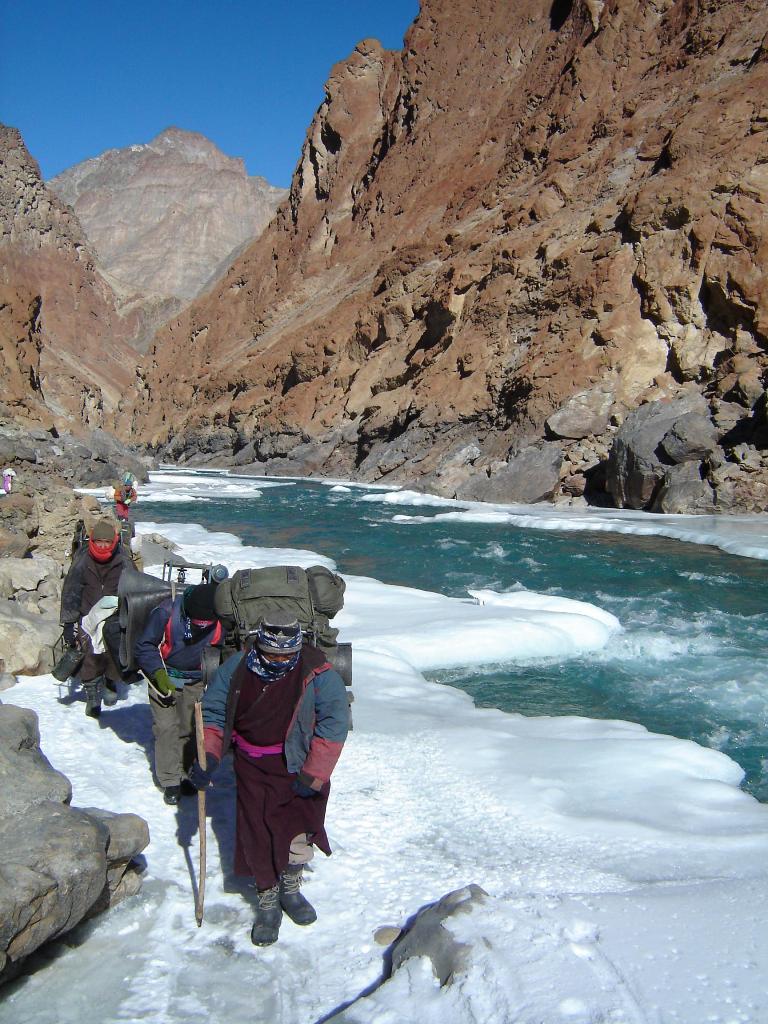
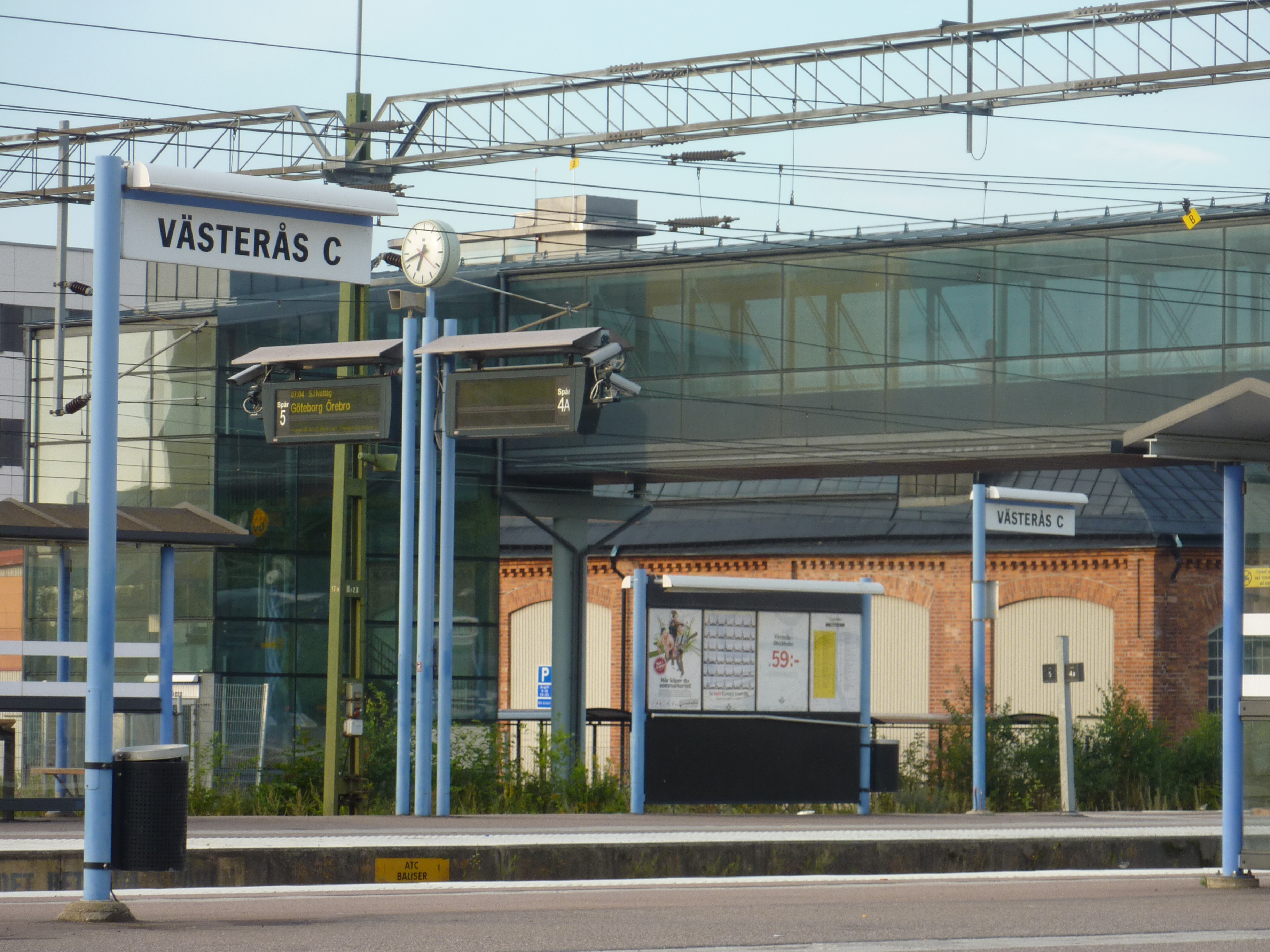

I went here actually and it was so fascinating. You did a great job covering the history and I hope it inspires more people to visit! Love your photos (way better than mine from five years ago)!
Thank you. My photos are way better now than anything I took 5 years ago, so if you went back now I’m sure your pictures would be great!
Wow I had no idea this kind of stuff existed! This is super cool and the bones are everywhere!!! I would love to visit it one day! Thanks for sharing!
Thanks for the comment. There were so many bones and skulls in there – you’d think it would be creepy, but it was strangely peaceful.
Wow – I had no clue this existed! I bet this was incredibly humbling to see in person. Really reminds you of your own mortality…
It really does remind you of your own mortality, which is quite confronting. At least I came away knowing that I’m not ready to face death before I’ve really lived!
This has to be one of the coolest finds! I have never heard of this place but your pictures are amazing. I am putting it on my list of places to go right now. Thanks for sharing.
There are quite a few of them around Europe, I believe. I think there are much bigger ones in some places – it’s definitely worth checking one out.
Perfect example of dark tourism, in all honesty, I think its required. Its important to be educated about the plagues and wars as much as culture and food.
Absolutely. Dark tourism is confronting, but I think it’s the only way we can engage in history in a meaningful way. History shapes nations, politics, and people – we have to stare it in the face sometimes.
Oh wow this is something else.. So unique! i never knew it existed!! But it does remind me of Paris undergrounds!!
I haven’t been to the Paris catacombs, but I imagine them to be a larger scale version of this. I think they are a fascinating historical relic.
There is a few pf these bone churches around Europe. We are headed to Portugal in December and I believe there are similar churches in Faro and Evora that we plan to look at
I would like to see what the ones in Faro and Evora are like! Share pictures when you have been.
I’m the same. I can’t make my mind whether I like this. It seems a really disrespectful towards the dead to use their remains to decorate places now but certainly intriguing.
You can’t get more different from ‘resting in peace’ than being displayed to the public, can you? It kind of reminds me of how criminals and traitors were tied to pikes and displayed above castle walls in medieval times. Hopefully, these people are in better places now and couldn’t care less about the bones they left behind.